|
Since a solar corona is high temperature,
the substance which constitutes a corona with solar gravity cannot be shut up completely.
A part of corona gas is blowing off to the interplanetary space as Solar Wind.
The speed is about 500 km/s near the earth.
A top is the distribution of the speed of the solar wind which blows off from the whole solar surface
observed with the antenna of the Kiso Observation.
In the image, the blue is shown a quick speed, and the red is shown a late speed.
太陽コロナは高温であるために,
太陽の重力によってコロナを構成する物質を完全に閉じ込めることはできません.
コロナガスの一部は,太陽風となって惑星間空間に吹き出しています.
その太陽風の速度は,地球の近くでは約500km/sです.
上図は,木曽観測施設のアンテナで観測された,
太陽全面から吹き出す太陽風の速度の分布を求めたものです.
図では,青い方は速度が速く,赤い方は遅いことを示しています.
 Detailed explanation Detailed explanation
By courtesy of K.Fujiki (Nagoya Univ.) |
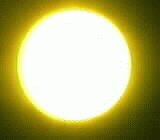
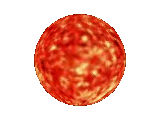

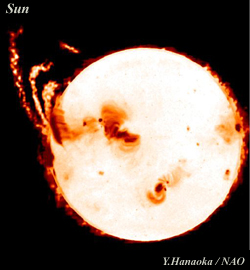
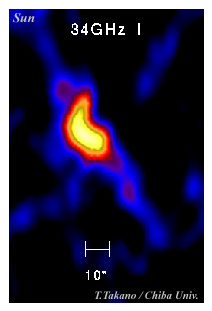
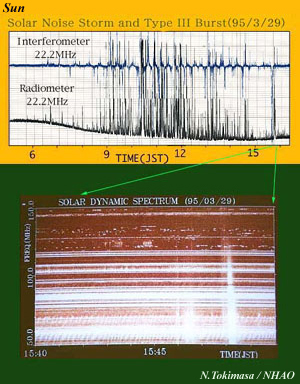

 Go to Submenu
Go to Submenu Go to Menu
Go to Menu